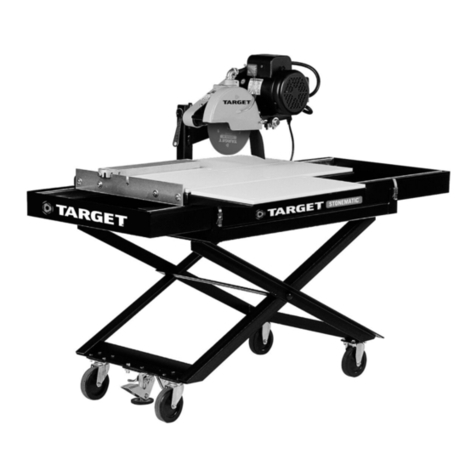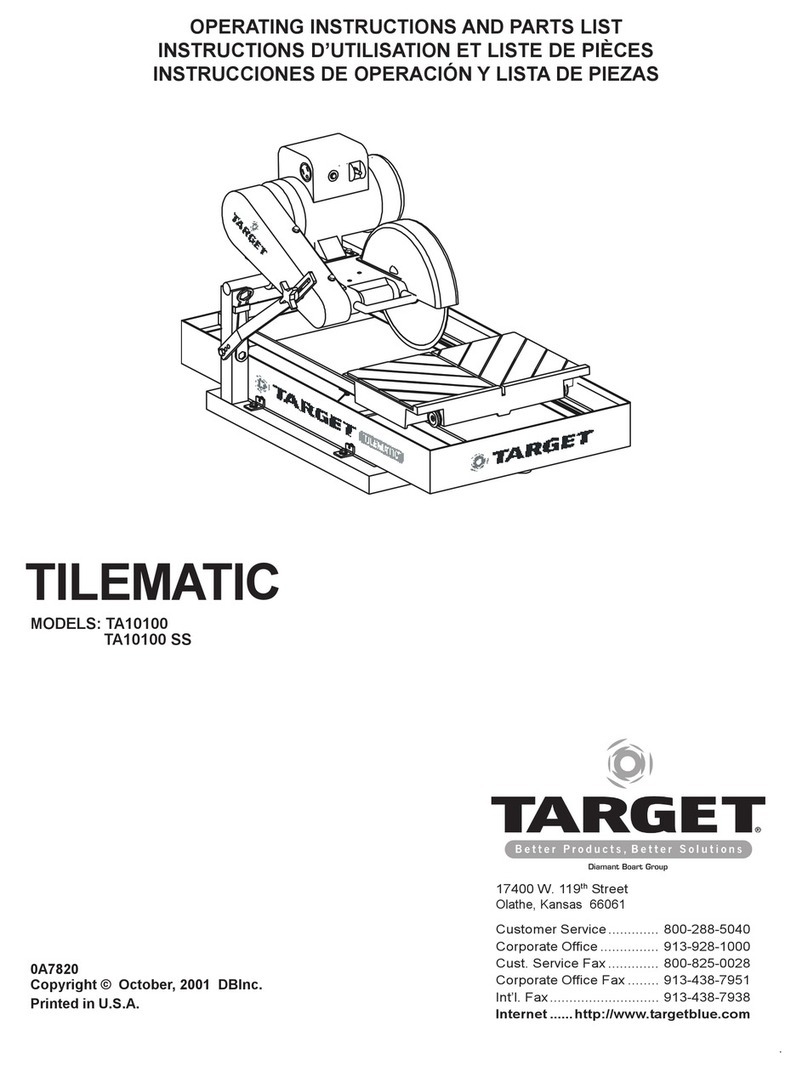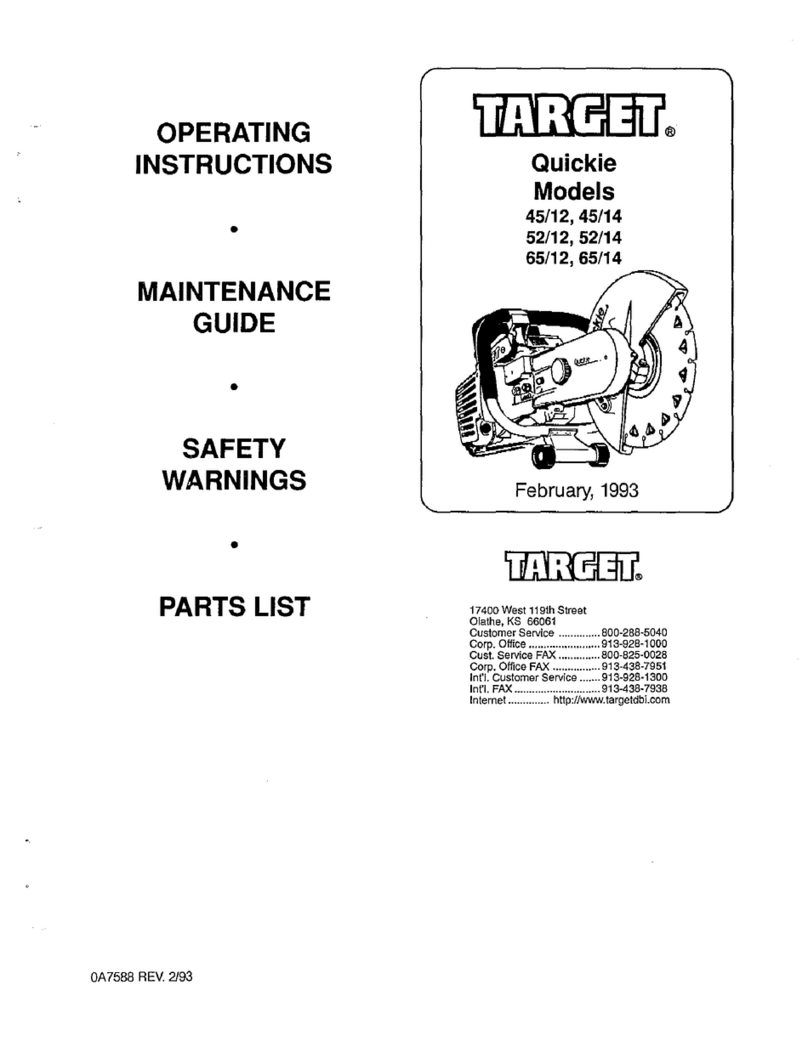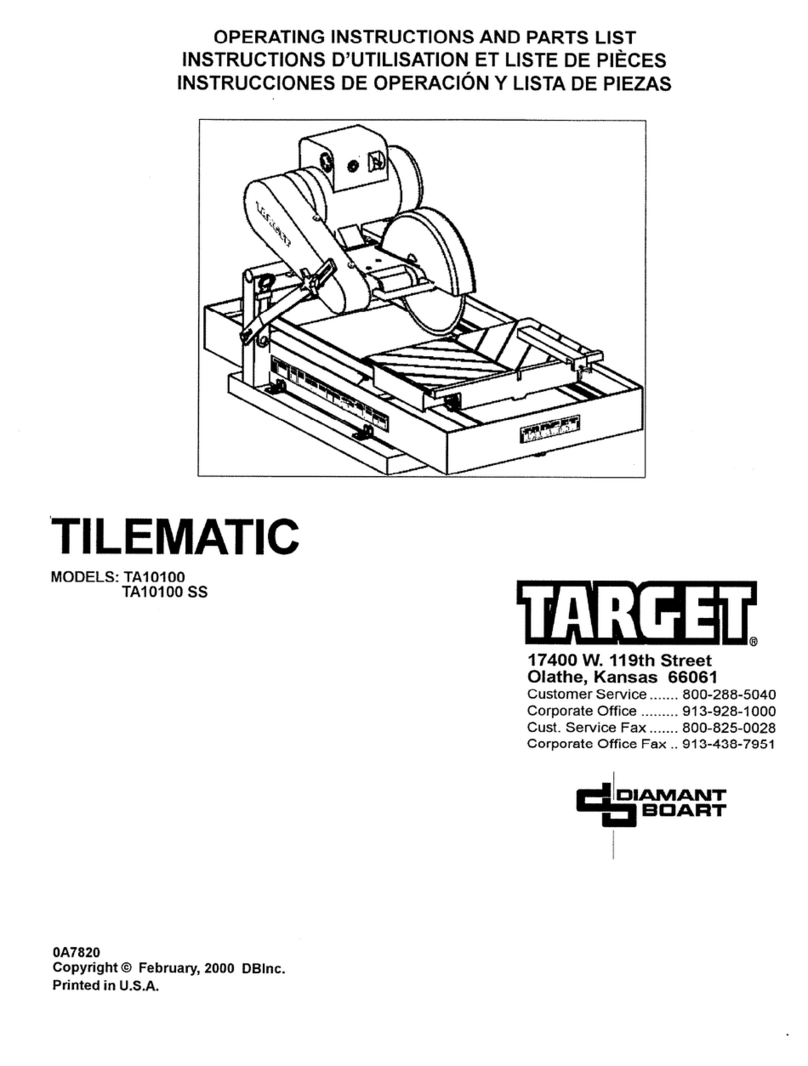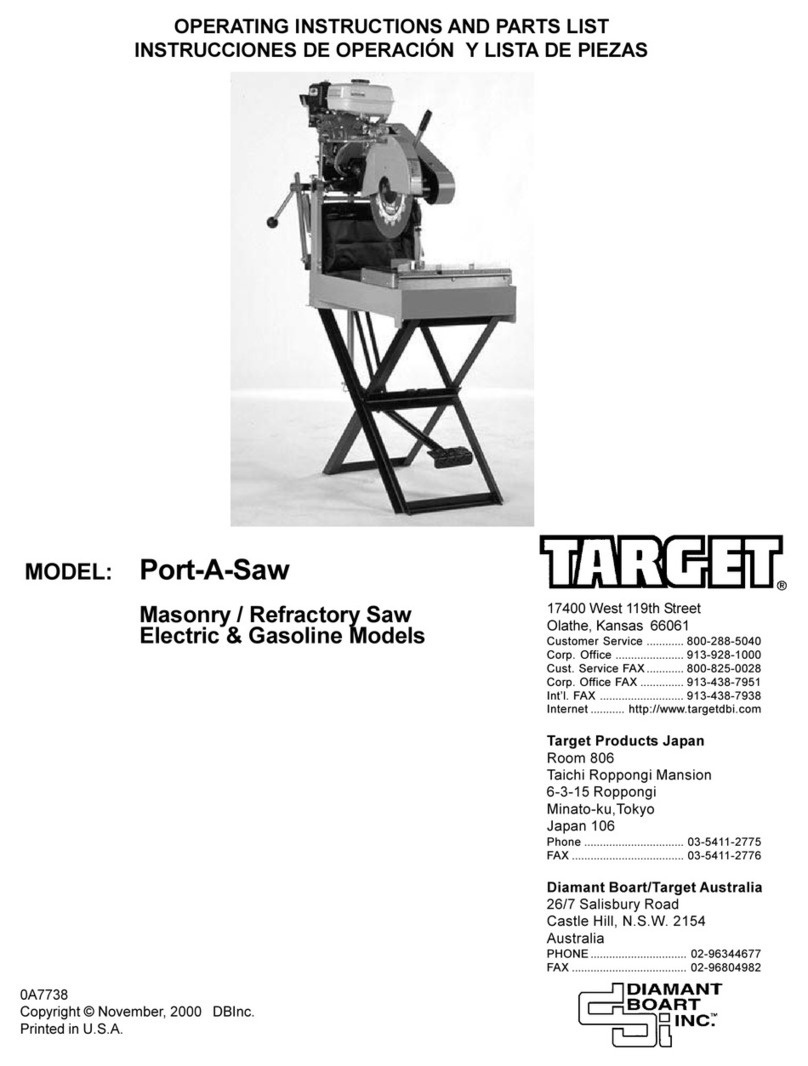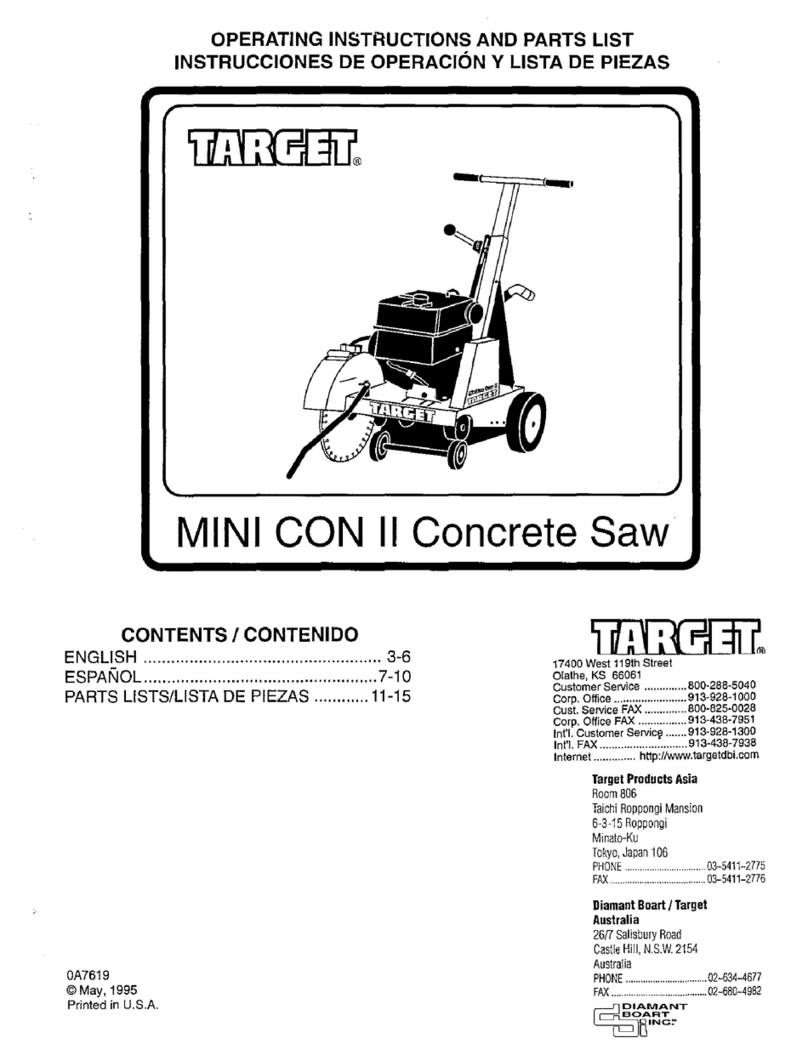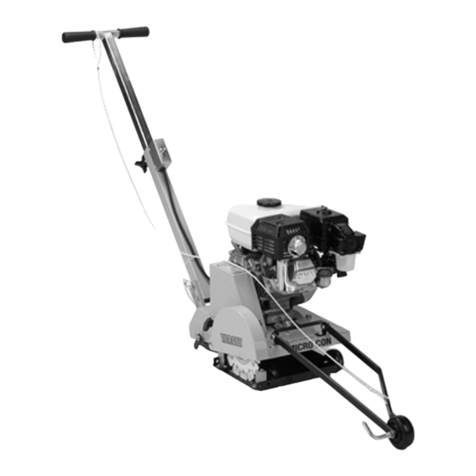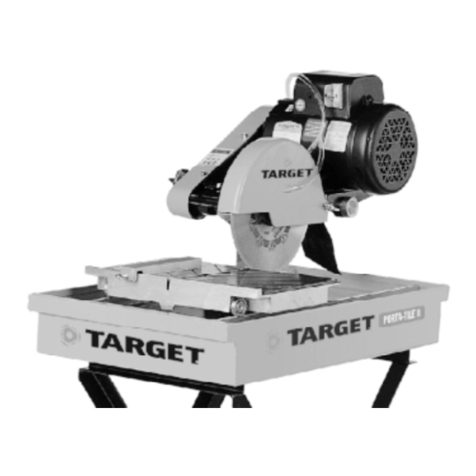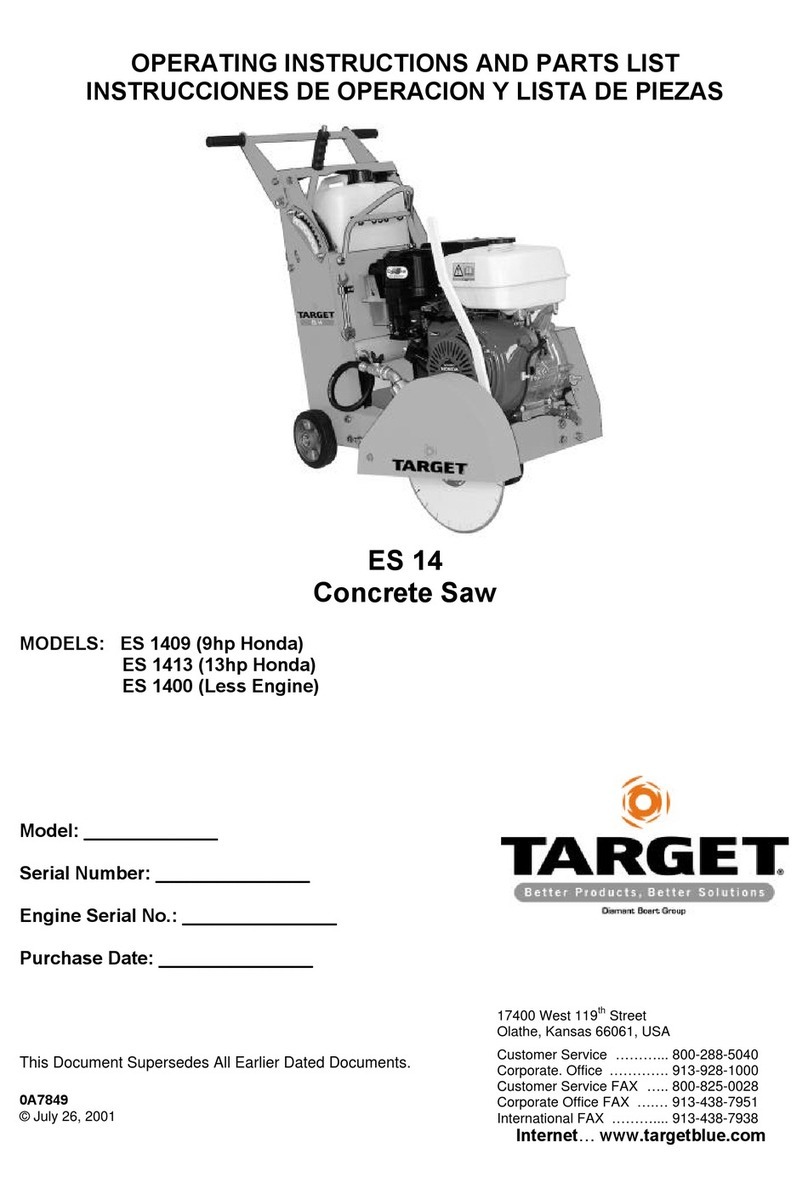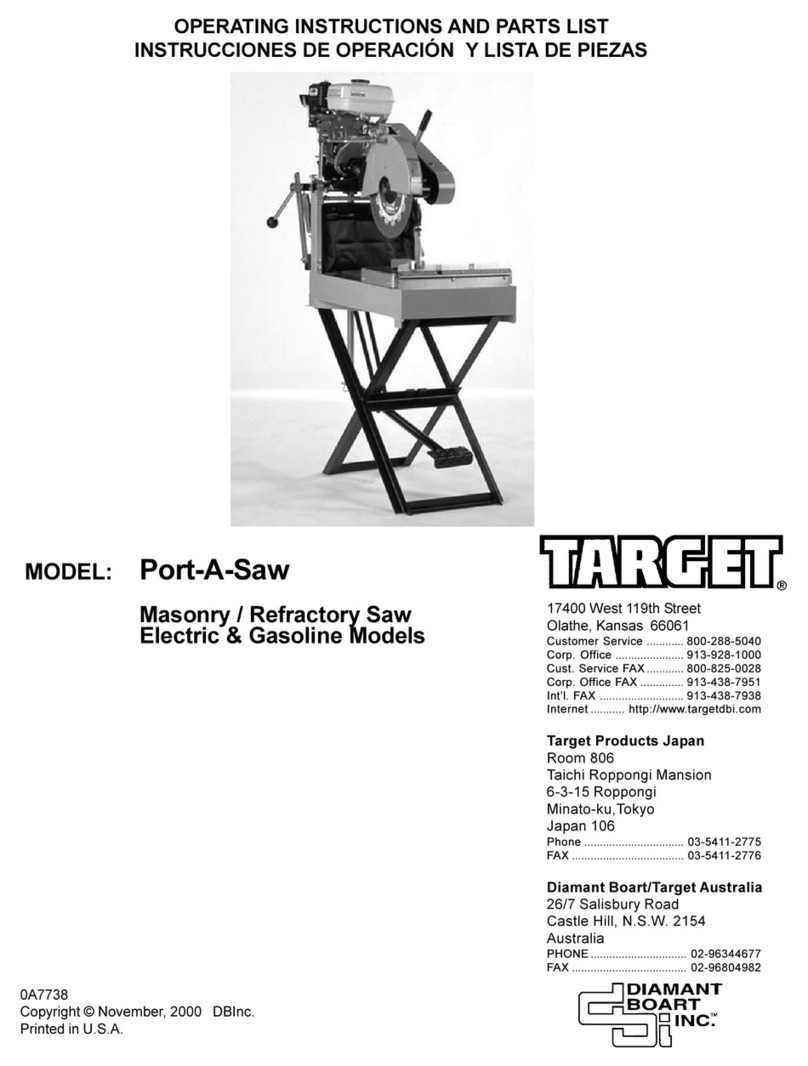DRAFT
3
Important information before you start!
When the machine is delivered, the wheels are locked in a transportation position and all
electricity is disconnected.
1.
Wheel
lock
The automatic feeding system is active when the
wheel lock (1) is in right position. The wheels are
thereby locked and function as trans security lock.
To employ manual feeding and unlock the wheels,
turn the handle (1) to left position. With the hand
le
turned right, it is impossible to move the machine
without electricity.
2.
Main electricity fuse
The electricity system has a separate main fuse. The
machine cannot be used before the main fuse (2) is
turned into operating position.
Do not operate a
ny electric system before you have
carefully read and carried out the electrically
instructions at page 5 to 8.
3.
Battery and the 12 V main switches
All battery cables are disconnected from the battery
(4) when you receive the machine from the factory.
The 12 V main switch is placed within the saw (3).
The cables have to be connected and the main switch
must be turned on before the winch and the
hydraulic system may be used.
NOTE:
For your own and others security, please employ the mentioned tech
nical
locking systems when
You leave the machine at a construction site,
The machine is stored and
The machine is transported to a new site.
